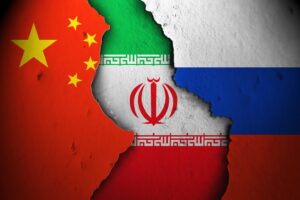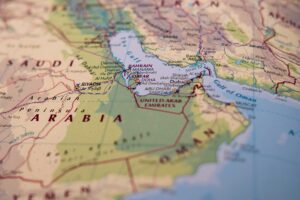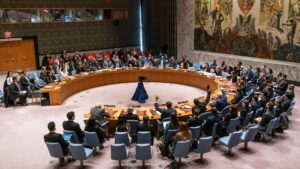The United States, together with the United Kingdom, played a decisive role in the overthrow of Iran’s nationalist prime minister Mohammad Mossadegh in August 1953. The decision to externally intervene in Iranian politics in such a dramatic fashion, which reinstalled Mohammad Reza Shah as a ruler with broadly increased powers, was largely motivated by the nationalization of the country’s oil industry under Mossadegh in May 1951. These are the two key findings presented by Iranian-American historian Ervand Abrahamian, Professor Emeritus of History at Baruch College and the Graduate Center in the City University of New York, in his recently published book “Oil Crisis in Iran: From Nationalism to Coup d’Etat.”
US and British efforts were indispensable for the coup to succeed.
The first insight is by no means a new one. To be sure, there is a fair dose of articles arguing that it was mainly Iranian soldiers, police forces, and clerics that were responsible for Mossadegh’s downfall.[i] This notwithstanding, a well-established body of scholarship has by now demonstrated that US and British efforts were indispensable for the coup to succeed. As historian and expert on the 1953 coup Mark J. Gasiorowski has written, British activities “were largely responsible for the gradual erosion of Mosaddeq’s base of support” while “the coup could not have occurred at the time and in the manner it did without considerable U.S. assistance.”[ii] After October 1952, when Tehran broke diplomatic relations with London, it was mainly U.S. operatives on the ground who continued the British-initiated efforts to pressure Mossadegh, eventually bringing about the prime minister’s overthrow. One of these CIA operatives was Kermit Roosevelt, grandson of US president Theodore Roosevelt. Upon his return from a short exile in Rome after the first attempt to overthrow Mossadegh had failed days before, Mohammad Reza Shah told the CIA official of notable pedigree: “I owe my throne to God, my people, my army–and to you!”.[iii]
If the key role of Washington and London in the 1953 coup is well-established, this is partly because of Abrahamian’s previous book on the topic, “The Coup: 1953, the CIA, and the Roots of Modern U.S.-Iranian Relations”, published in 2013.[iv] The added value of “Oil Crisis in Iran” regarding the role of foreign actors in the coup is to be found in Abrahamian’s new and careful study of around 1,000 pages declassified in 2017 by the US State Department–as of today, some files continue to be hidden from the public, reportedly because of British pressure.[v]
The plan contained four elements: a propaganda campaign against the government, organized economic pressure on Iran, the dispatch of a US emissary to convince the Shah of the necessity of a coup, and instructions to design a plan of action for the compliant General Fazlollah Zahedi to replace Mossadegh.
The newly declassified documents strengthen Abrahamian’s previous theses on the coup and shed new light on the specifics of the US’ interference. One of these key documents, initially released in 2013 with around one third of its content redacted, is the CIA directive to overthrow Mossadegh, formally entitled “Campaign to Install Pro-Western Government in Iran.”[vi] The plan, finally released almost in its entirety in 2017, contained four elements: a propaganda campaign against the government, organized economic pressure on Iran, the dispatch of a US emissary to convince the Shah of the necessity of a coup, and instructions to design a plan of action for the compliant General Fazlollah Zahedi to replace Mossadegh as prime minister after his overthrow.[vii]
One of the details emerging from the study of the recently released files is that, contrary to what many had previously thought, Washington was fully on board with the idea of deposing Mossadegh prior to Dwight D. Eisenhower’s inauguration as president of the United States in January 1953. Abrahamian notes that “the coup came as a result of policies initiated under Truman well before the advent of the Eisenhower administration.”[viii]
What led Washington and London to depose Mossadegh was not fear of communism the protection of the economic interests endangered by the prime minister’s nationalization of the oil industry.
The second key insight of Abrahamian’s book, and one that is more novel than the role of the United States and the United Kingdom in the coup, concerns the motivations of these two countries in interfering in Iran. The conventional approach to the coup argues that “the United States feared Iran to be at risk of falling behind the Iron Curtain.”[ix] It considers that US behavior regarding Iran was based on “the grip of anti-Soviet paranoia that had taken hold of Washington.”[x] Abrahamian opposes this conventional analysis. The British-Iranian historian convincingly argues that what led Washington and London to depose Mossadegh was not fear of communism spreading in Iran and coming to dominate the national government.
Instead, it was the protection of the economic interests endangered by the prime minister’s nationalization of the oil industry and the concern that, if Iran was allowed to take control of its own resources, other countries would follow suit and challenge Western interests around the world. It is true that key figures such as Kermit Roosevelt and CIA Director Allan Dulles considered that there was a rising Communist threat in Iran. Nevertheless, CIA reports at the time of the coup–which were largely made public in 2017–generally indicated that the Tudeh, Iran’s communist party, was very far from having the organizational strength or popular support needed to take power.[xi] Nor did the Tudeh have strong ties with Moscow, as “the Soviets remained remarkably inactive in Iran throughout these years.”[xii] Abrahamian’s appraisal coincides with previous research on the subject which sees Tudeh’s relations with the USSR at that historical moment as marked by a “lack of Soviet influence and support.”[xiii]
The centrality of the oil dispute in the decision to overthrow Mossadegh is laid bare by the events that succeeded his removal. The nationalist prime minister had been ready to pay compensation for the nationalization of Iranian oil. However, it would always be easier for the US and the UK to deal with Prime Minister Zahedi and Mohammad Reza Shah, who owed so much to their foreign supporters. In the aftermath of the coup, the United States and the United Kingdom “would publicly accept nationalization on condition Iran privately agreed not to insist on its actual enforcement.”[xiv] Consequently, as historian Gregory Brew has aptly remarked, “the reality of nationalization was effectively reversed, and the Western oil companies would control the flow of Iranian oil for another 20 years.”[xv]
“Oil Crisis in Iran” is not the most appropriate book for those who want to read about the 1953 coup against Mossadegh for the first time. In writing his latest book, Abrahamian assumes considerable previous knowledge on the side of the reader. Furthermore, considerable sections of the volume occupy themselves with the historiography of the Mossadegh period. Abrahamian’s previous book on Mossadegh’s downfall, “The Coup”, will certainly be a better choice in case the reader is looking for a more accessible introduction.
Abrahamian invites us to rethink some of the commonly held assumptions about the 1953 coup.
This being said, “Oil Crisis in Iran” can only be defined as an impressive history. By studying the recently released documents on the coup and situating them in its historical and historiographical context, Abrahamian invites us to rethink some of the commonly held assumptions about the 1953 coup.
[i] Michael Rubin, “The Real Roots of Iranian Anti-Americanism,” The National Interest, February 27, 2021, https://nationalinterest.org/print/feature/real-roots-iranian-anti-americanism-178855; Ray Takeyh, “America and Iran, from Fascination to Antagonism,” The Washington Post, February 26, 2021, https://www.washingtonpost.com/outlook/america-and-iran-from-fascination-to-antagonism/2021/02/24/d6078bb4-7246-11eb-85fa-e0ccb3660358_story.html.
[ii] Mark J. Gasiorowski, “The 1953 Coup D’etat in Iran,” International Journal of Middle East Studies 19, no. 3 (1987): 276-277.
[iii] Stephen Kinzer, All the Shah’s Men: An American Coup and the Roots of Middle East Terror (Hoboken: John Wiley & Sons, 2008), p. 191; Ervand Abrahamian, Oil Crisis in Iran: From Nationalism to Coup d’Etat (Cambridge: Cambridge University Press, 2021), p. 152.
[iv] Ervand Abrahamian, The Coup: 1953, the CIA, and the Roots of Modern U.S.-Iranian Relations (New York: The New Press, 2013).
[v] David J Lynch, “Britain Pressed US to Join Iran Coup against Mosaddegh,” Financial Times, August 8, 2017, https://www.ft.com/content/9ea5c5e0-7c50-11e7-9108-edda0bcbc928.
[vi] Saeed Kamali Dehghan and Richard Norton-Taylor, “CIA Admits Role in 1953 Iranian Coup,” The Guardian, August 19, 2013, https://www.theguardian.com/world/2013/aug/19/cia-admits-role-1953-iranian-coup.
[vii] Abrahamian, Oil Crisis in Iran: From Nationalism to Coup d’Etat, pp. 134-6.
[viii] Ibid., p. 118.
[ix] Fariborz Mokhtari, “Iran’s 1953 Coup Revisited: Internal Dynamics versus External Intrigue,” Middle East Journal 62, no. 3 (2008): 475.
[x] Yann Richard, Iran: A Social and Political History since the Qajars (Cambridge: Cambridge University Press, 2019), p. 229.
[xi] Abrahamian, Oil Crisis in Iran: From Nationalism to Coup d’Etat., pp. 67-69.
[xii] Ibid., p. 76.
[xiii] Maziar Behrooz, “Tudeh Factionalism and the 1953 Coup in Iran,” International Journal of Middle East Studies 33, no. 3 (2001): 377.
[xiv] Abrahamian, Oil Crisis in Iran: From Nationalism to Coup d’Etat., p. 72.
[xv] Gregory Brew, “The Collapse Narrative: The United States, Mohammed Mossadegh, and the Coup Decision of 1953,” Texas National Security Review 2, no. 4 (2019): 58.
















